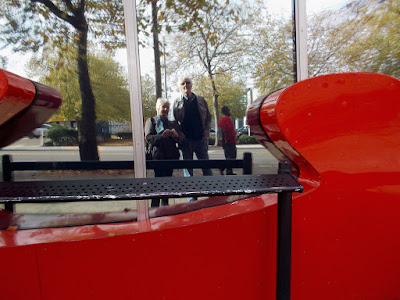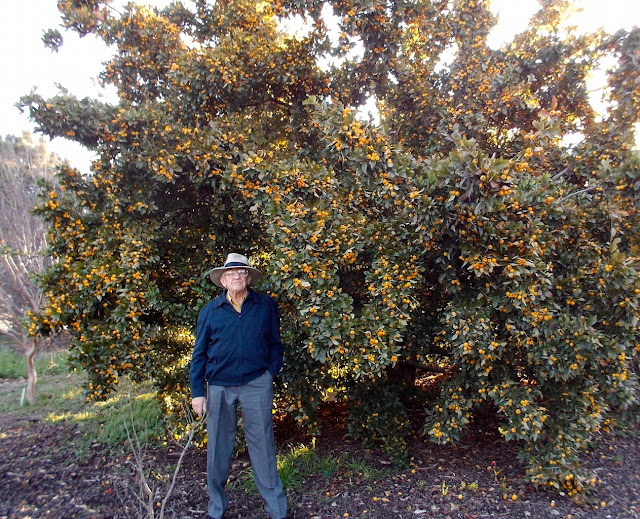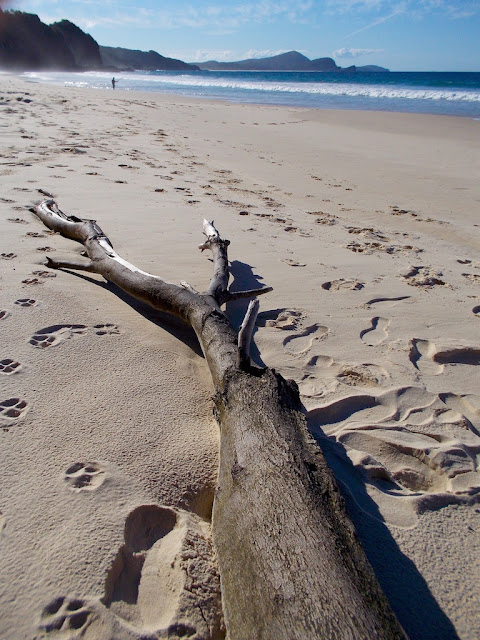Needing a brief break from our usual routines, we booked an Airbnb studio in Seattle for a couple of nights and headed down the freeway to Ballard, a suburb we knew nothing about just north of the city centre. It turned out to be a good choice as we found Ballard to be an attractive neighbourhood with a compact commercial area full of interesting small shops, pubs and cafes.
The backyard studio was quite small, but self-contained, comfortable and quiet, set in a pretty garden.
During our stay we particularly enjoyed the happy hour at Percy & Co.'s pub...
...and the delicious French pastries at Cafe Besalu.
On Tuesday morning, we visited the Chihuly Museum of Glass. We had seen Dale Chihuly's exuberant works in his home town of Tacoma quite a few years ago and I was keen to see this latest exhibition of his work.
The interior spaces were quite dark, lit only by the glowing colours of the glass forms, which ranged from seashell ceilings...
...to writhing glass snakes...
...to forms based on Indian baskets against a backdrop of Chihuly's own collection of Navaho blankets..
...to chandeliers...
... to beautiful wave-like bowls...
... to glittering dreamscapes.
However, it was the exterior pieces that appealed to me the most, where glass and plants were arranged in a series of startling combinations.
This red and autumn-gold creation was my favourite:
Above the garden, the sky was dominated by the famous space needle, still looking so very modern after 50 years.
As we left the complex, we paused for a mirror shot outside the Museum of Rock and Roll.
One of the exhibits in the glass museum was a wall of enlarged old postcards of glasshouses around the world, yet another of Chihuly's private collections. It mentioned among others the glasshouse in Seattle's Volunteer Park, so we set off to find it. The park proved to be a peaceful place to sit on a bench in weak fall sunlight and eat the sandwiches we'd bought on our way, looking out over the still water of a reservoir towards the city skyline.
The glasshouse was pretty impressive too.
Our next stop was the Japanese garden in the University of Washington arboretum. It was the perfect time to be there with so many of the maples in their autumn finery.
There were some other interesting features to admire as well, like this ancient wisteria ...
... and a scattering of Amanita muscaria across the mossy ground,...
...not to mention a 200-year-old stone lantern, where visitors had wedged coins under the capstone.
Finally, we made our way back to Ballard and walked down to the Hiram Chittenden locks that provide ship access between Lake Washington and Puget Sound. They also maintain the water level of the lake at 20 to 22 feet above sea level and prevent salt water from entering the freshwater lake system.
As we navigated the pylons and gates surrounding the locks, I had to admire a couple of rosebushes encased in concrete, but still struggling to bloom where few other plants would survive.
The following day we left for home. Apart from visits to the places above, we had enjoyed walking around the Ballard neighbourhood, noting among other things:
- a wonderful wall made from recycled slabs of broken concrete beginning to green over with specks of moss
- a dry garden on a steep slope
- and finally, a nicely-phrased reminder to dog owners.






















































